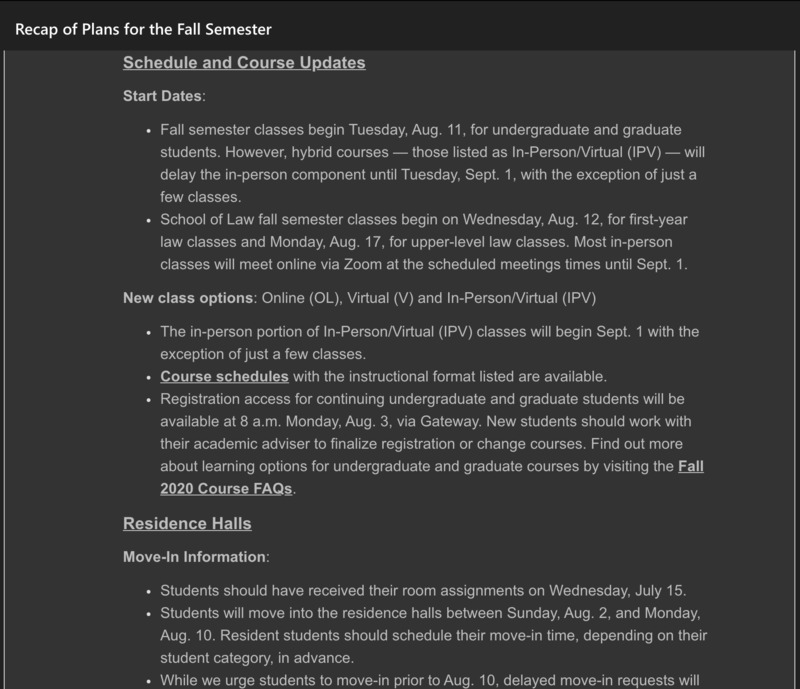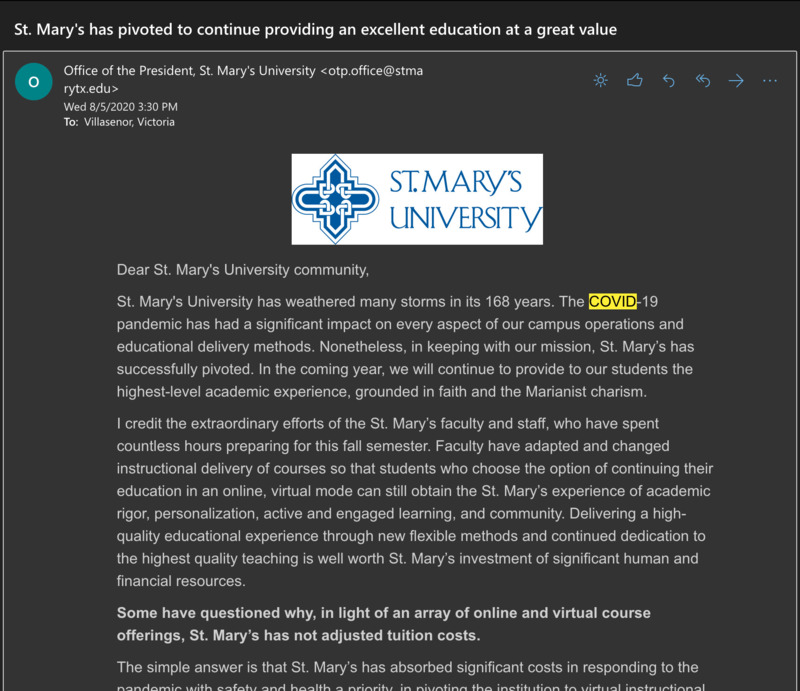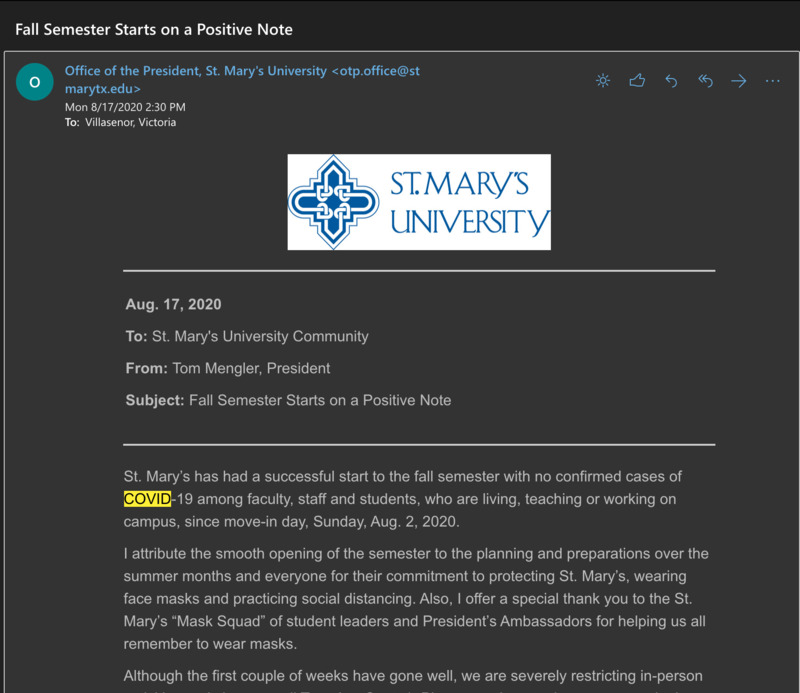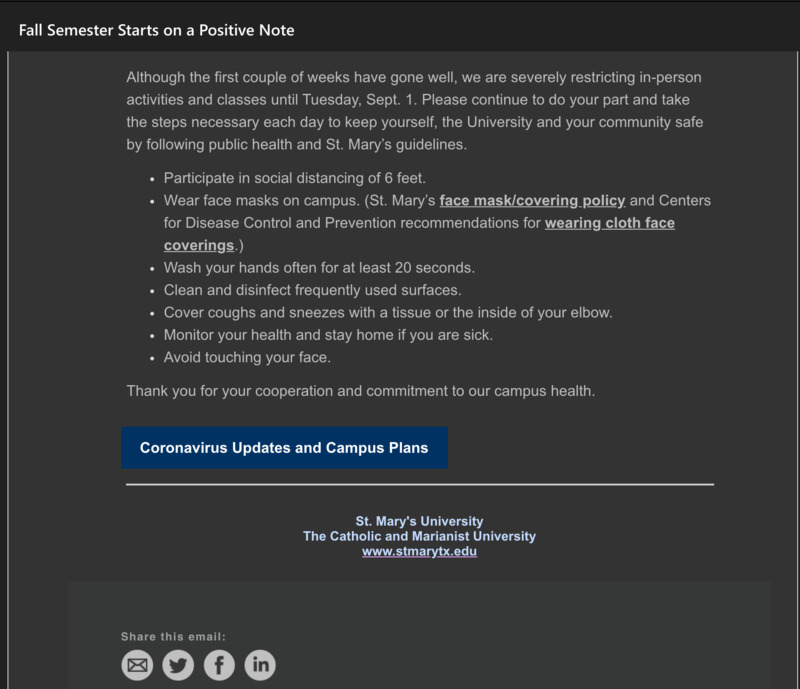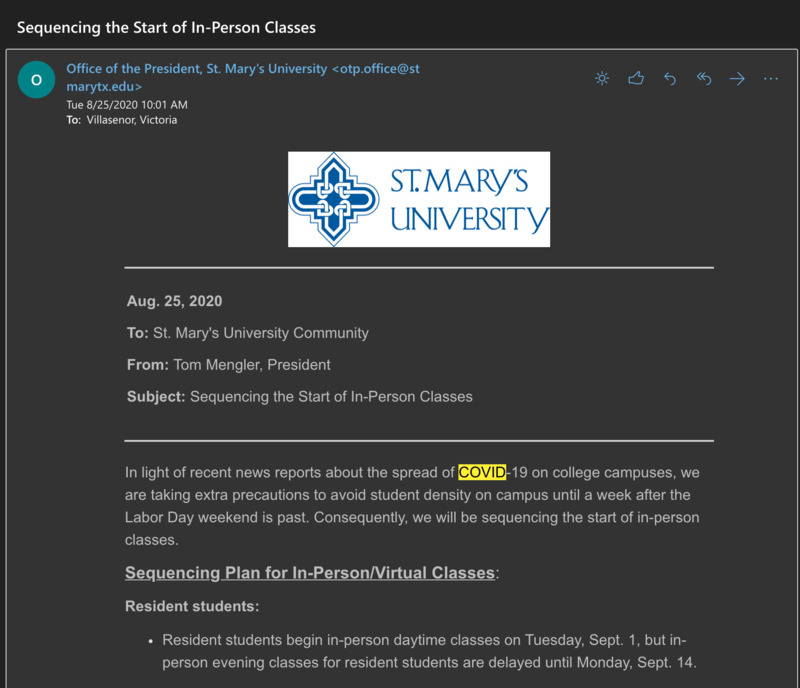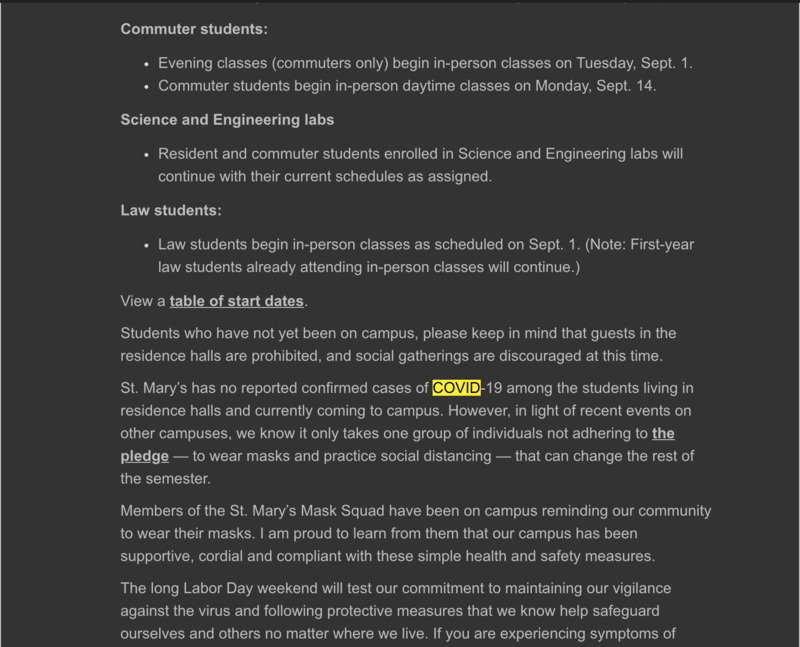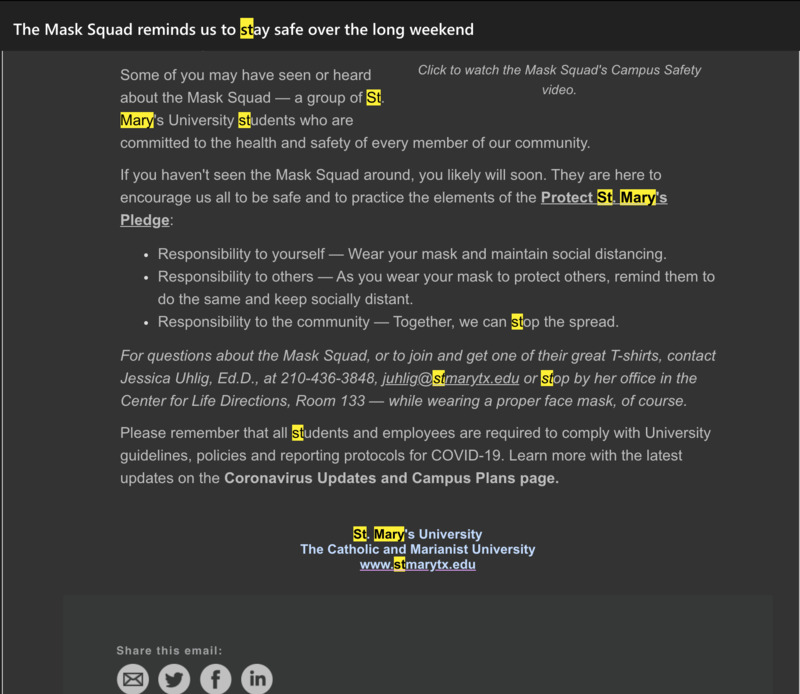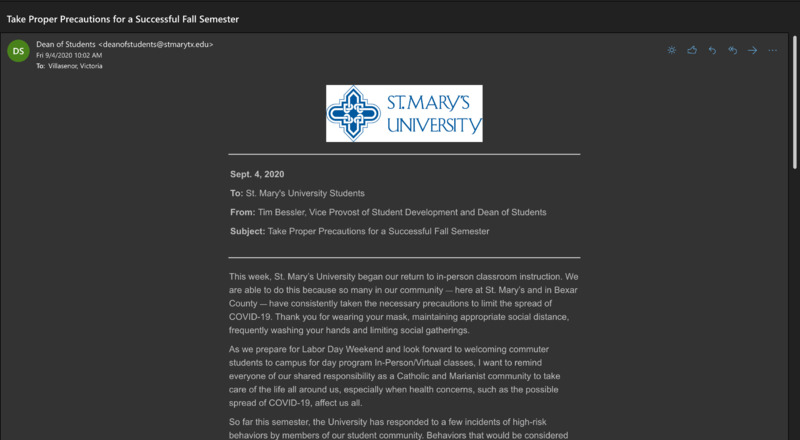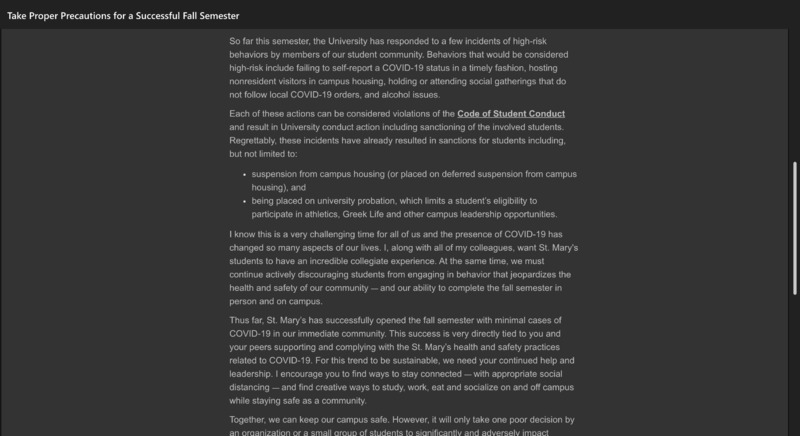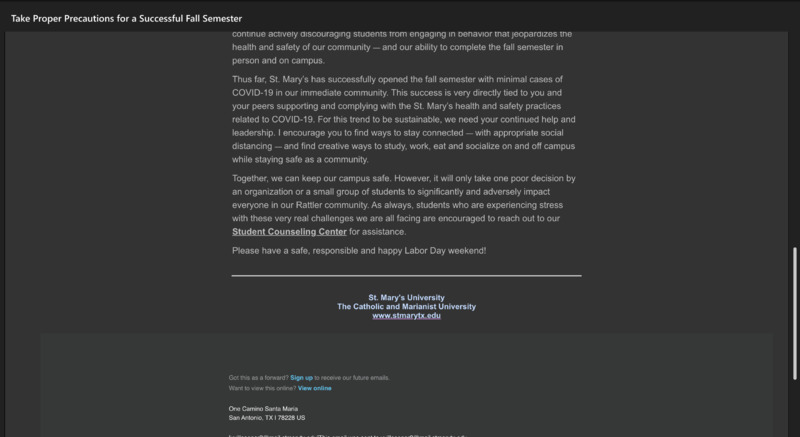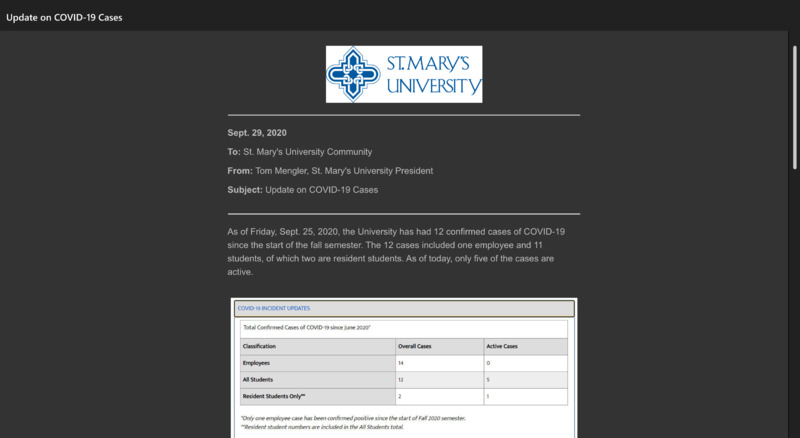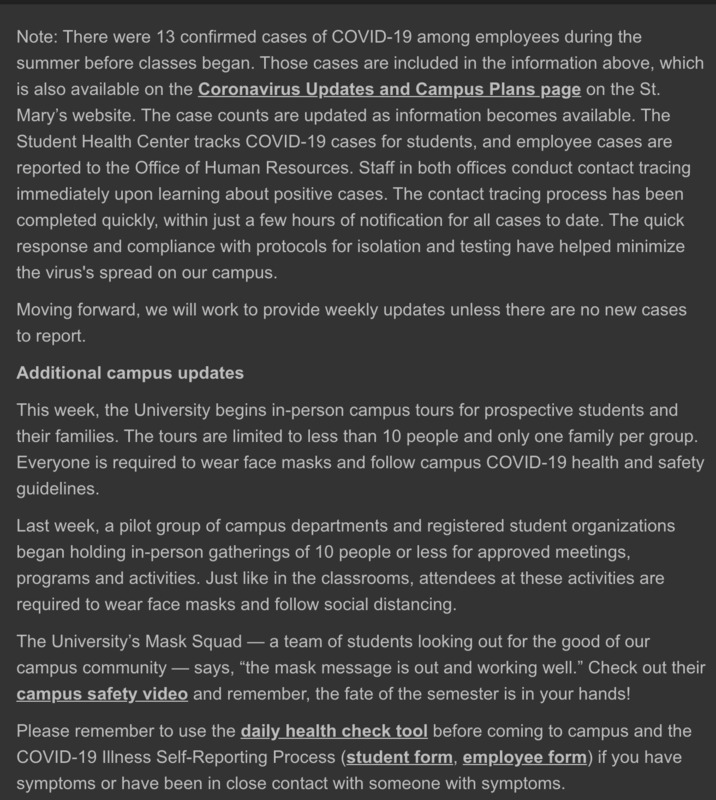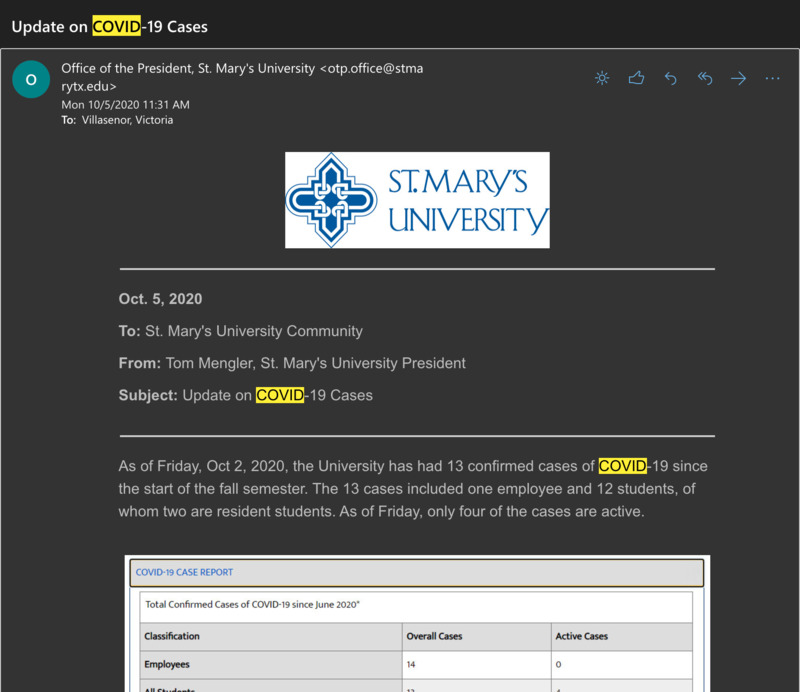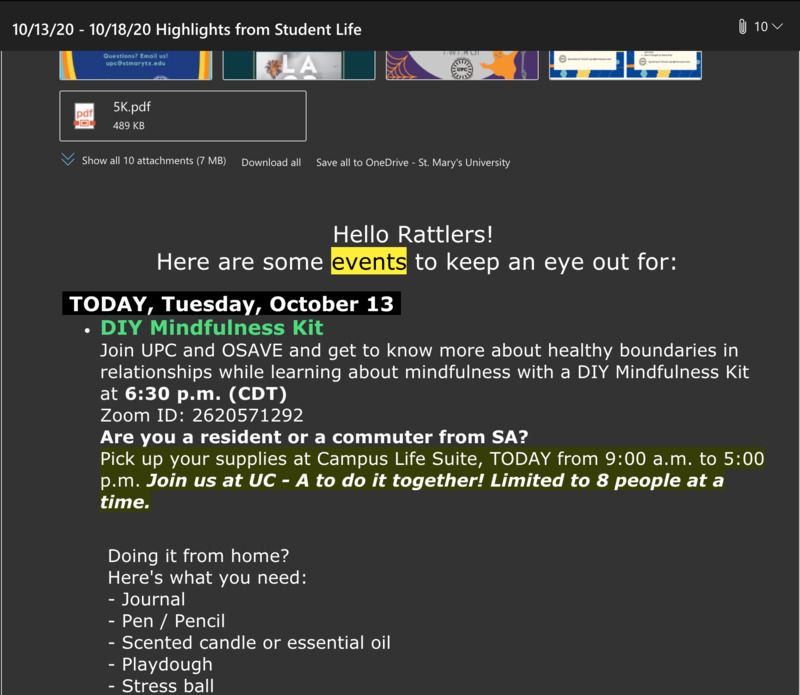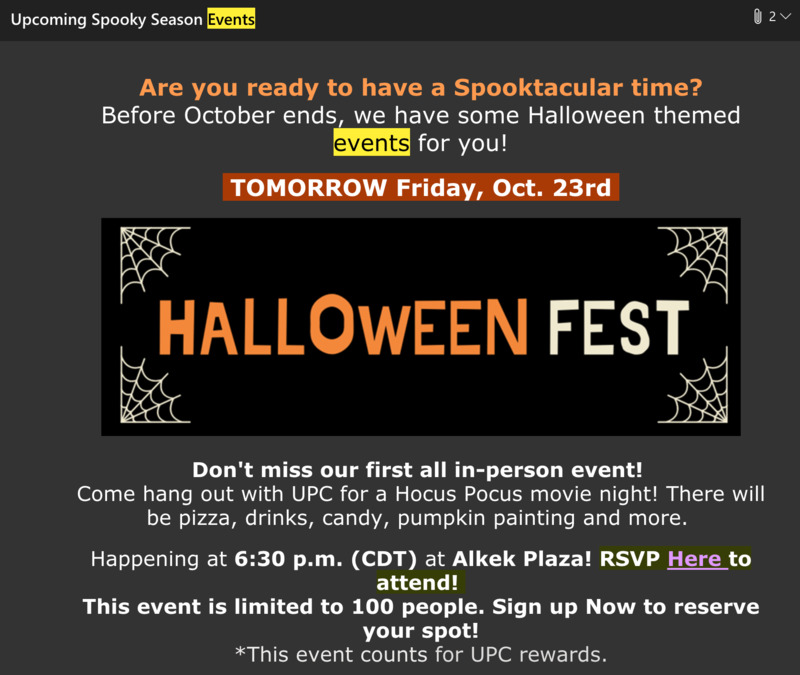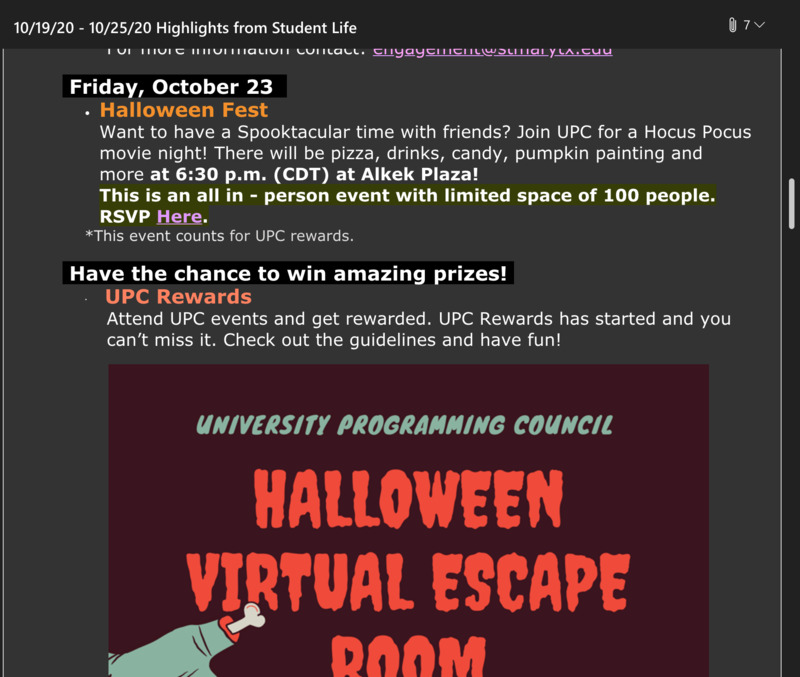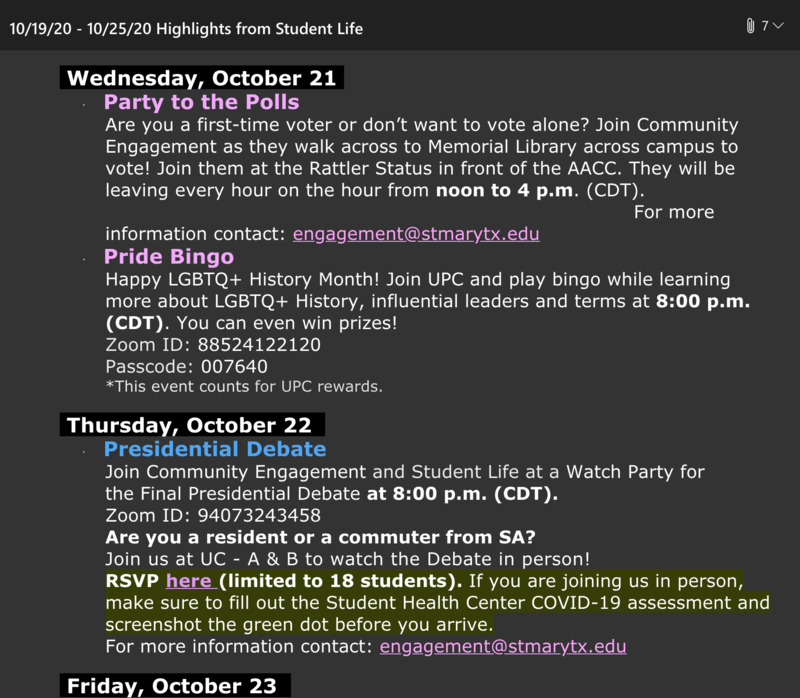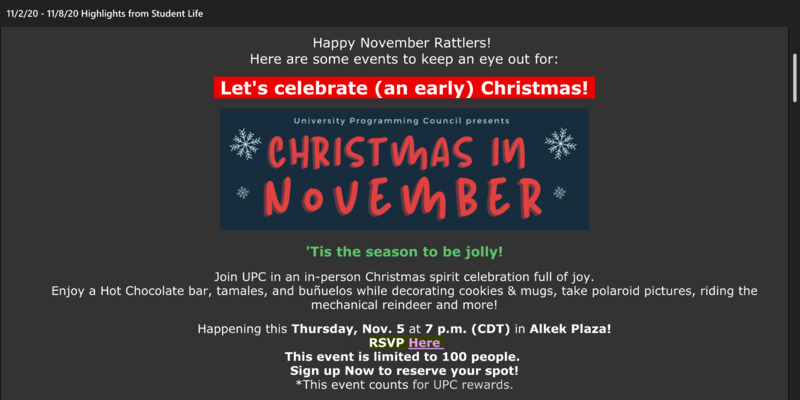Item
How it started v. How it's going: How StMU planned to incorporate COVID-19 precautions for the Fall 2020 semester and how that's played out
Title (Dublin Core)
How it started v. How it's going: How StMU planned to incorporate COVID-19 precautions for the Fall 2020 semester and how that's played out
Description (Dublin Core)
These images are screenshots of emails from St. Mary’s University detailing how the university will adapt for the Fall 2020 semester, updating students on the ongoing changes to in-person classes, tracking the number of COVID-19 cases throughout the summer and into the fall, and showing how St. Mary’s slowly begins to open up and allow in-person gatherings.
In the beginning of the semester, St. Mary’s University was very cautious in thinking of how and when to resume in-person classes and welcome students back to campus. The first couple of weeks were strictly virtual, and this virtual learning was even extended in response to a mild spike in cases across San Antonio. Classes resumed in person one week after the Labor Day weekend, and St. Mary’s didn’t experience a significant outbreak in those initial weeks. Towards the end of September, the number of COVID-19 cases began to mildly grow. As of right now, the University has had 25 COVID-19 cases since March 2020.
In October, keeping up with Halloween and other events to come, St. Mary’s began allowing small in-person events. These events were usually outside, with the exception of some indoors. All events have a maximum number of students allowed to participate, and some even require temperature checks and confirmation of negative tests. I, at first, thought it was concerning that as the number of COVID-19 cases in the St. Mary’s University community grew, campus began and continued to organize and advertise on-campus gatherings. I was afraid that St. Mary’s was giving in to the celebratory attitude across the city for “Spooky Season” and fall weather, but neglecting the health of students. However, I think St. Mary’s has been doing the best job they can to provide the “college experience” within the safety parameters set by the CDC. Our mild number of cases may be considered an accomplishment when compared to larger outbreaks at a number of universities such as Baylor, Angelo State, Sam Houston State, Texas Tech, and Wayland Baptist (to name a few). The New York Times breaks down campus outbreaks for most campuses in each state linked in this post.
The number of COVID cases began slowly rising towards the end of September, which is also when campus organizations began hosting in-person events. Despite happening simultaneously, there has not been a major spike following these events (so far). In speaking with resident students, the attitude shared on campus seems to be one of caution, which starts at the top. St. Mary’s is not just implementing social distancing and capacity limits in classes and events, the university is maintaining these standards within all campus facilities and student are complying.
Reflecting on these emails and thinking about Texas universities all together, I consider myself fortunate. I’m thinking that because San Antonio has a harder history with COVID-19 in the city, our universities are more diligent than those situated in towns or cities that are not. It can feel like campuses are a completely different town within a city or town, but I think St. Mary’s sees themselves as part of the larger San Antonio community.
In the beginning of the semester, St. Mary’s University was very cautious in thinking of how and when to resume in-person classes and welcome students back to campus. The first couple of weeks were strictly virtual, and this virtual learning was even extended in response to a mild spike in cases across San Antonio. Classes resumed in person one week after the Labor Day weekend, and St. Mary’s didn’t experience a significant outbreak in those initial weeks. Towards the end of September, the number of COVID-19 cases began to mildly grow. As of right now, the University has had 25 COVID-19 cases since March 2020.
In October, keeping up with Halloween and other events to come, St. Mary’s began allowing small in-person events. These events were usually outside, with the exception of some indoors. All events have a maximum number of students allowed to participate, and some even require temperature checks and confirmation of negative tests. I, at first, thought it was concerning that as the number of COVID-19 cases in the St. Mary’s University community grew, campus began and continued to organize and advertise on-campus gatherings. I was afraid that St. Mary’s was giving in to the celebratory attitude across the city for “Spooky Season” and fall weather, but neglecting the health of students. However, I think St. Mary’s has been doing the best job they can to provide the “college experience” within the safety parameters set by the CDC. Our mild number of cases may be considered an accomplishment when compared to larger outbreaks at a number of universities such as Baylor, Angelo State, Sam Houston State, Texas Tech, and Wayland Baptist (to name a few). The New York Times breaks down campus outbreaks for most campuses in each state linked in this post.
The number of COVID cases began slowly rising towards the end of September, which is also when campus organizations began hosting in-person events. Despite happening simultaneously, there has not been a major spike following these events (so far). In speaking with resident students, the attitude shared on campus seems to be one of caution, which starts at the top. St. Mary’s is not just implementing social distancing and capacity limits in classes and events, the university is maintaining these standards within all campus facilities and student are complying.
Reflecting on these emails and thinking about Texas universities all together, I consider myself fortunate. I’m thinking that because San Antonio has a harder history with COVID-19 in the city, our universities are more diligent than those situated in towns or cities that are not. It can feel like campuses are a completely different town within a city or town, but I think St. Mary’s sees themselves as part of the larger San Antonio community.
Date (Dublin Core)
Creator (Dublin Core)
Contributor (Dublin Core)
Event Identifier (Dublin Core)
Partner (Dublin Core)
Type (Dublin Core)
screenshots
Link (Bibliographic Ontology)
http://web.archive.org/web/20201108224337/https://www.nytimes.com/interactive/2020/us/covid-college-cases-tracker.html
Controlled Vocabulary (Dublin Core)
Curator's Tags (Omeka Classic)
Contributor's Tags (a true folksonomy) (Friend of a Friend)
Collection (Dublin Core)
Exhibit (Dublin Core)
#CoverYourFangs>From Face-to-Face to Zoom
Date Submitted (Dublin Core)
11/02/2020
Date Modified (Dublin Core)
11/21/20
01/28/2021
03/28/2020
07/15/2021
Date Created (Dublin Core)
11/02/2020

